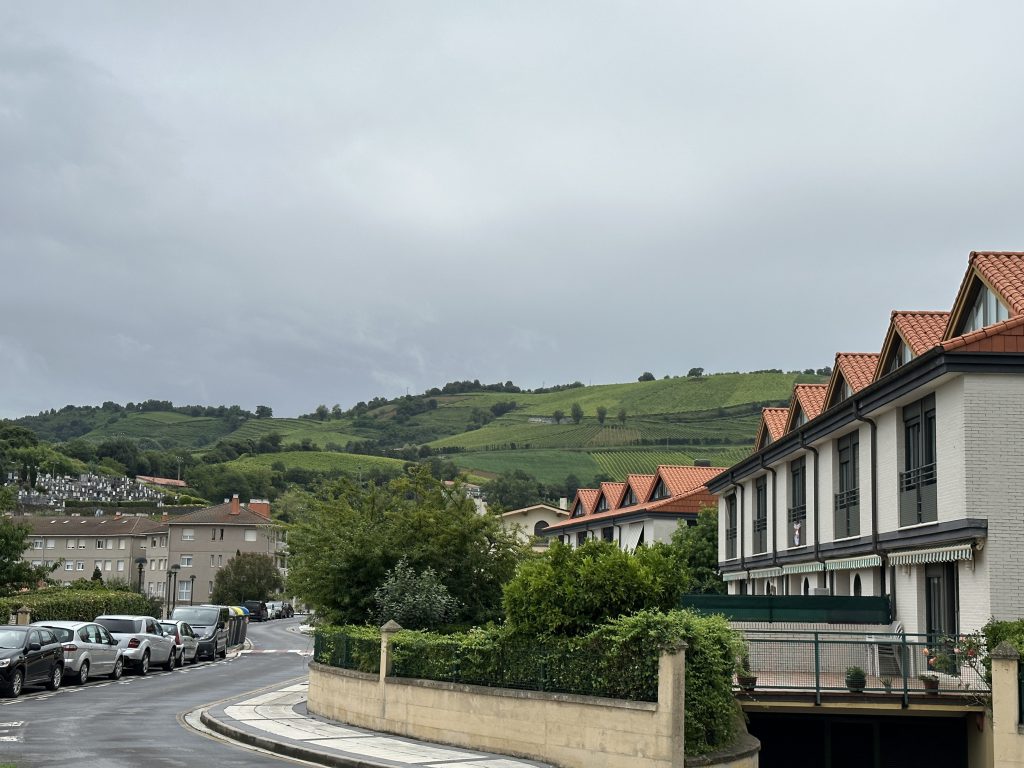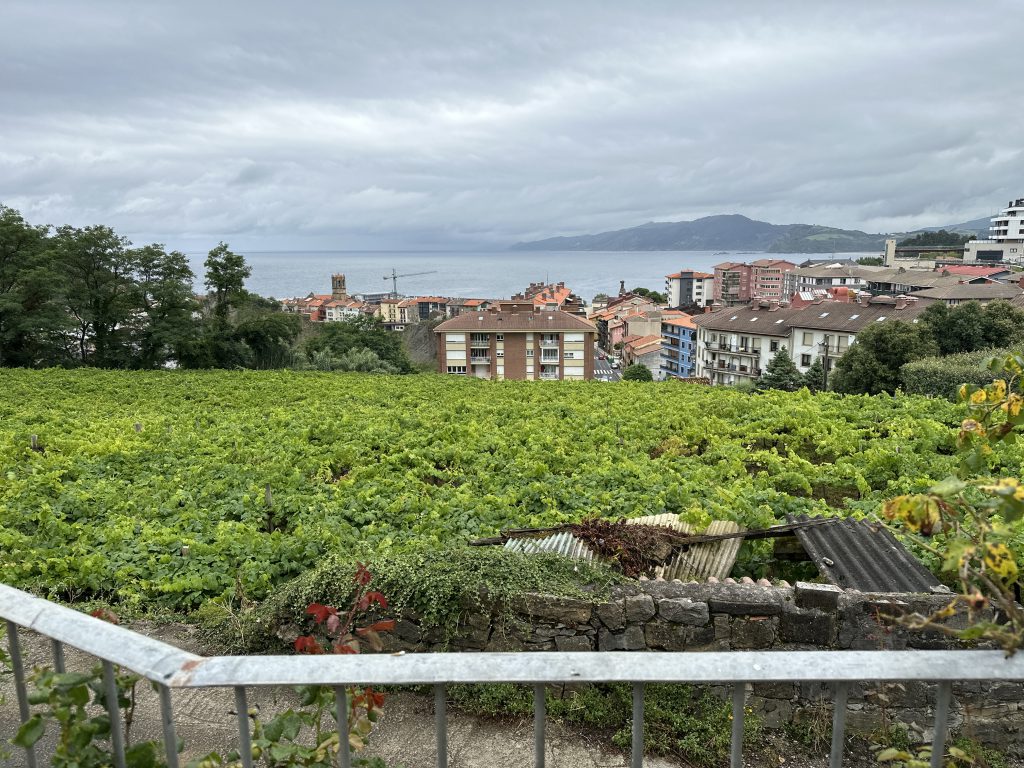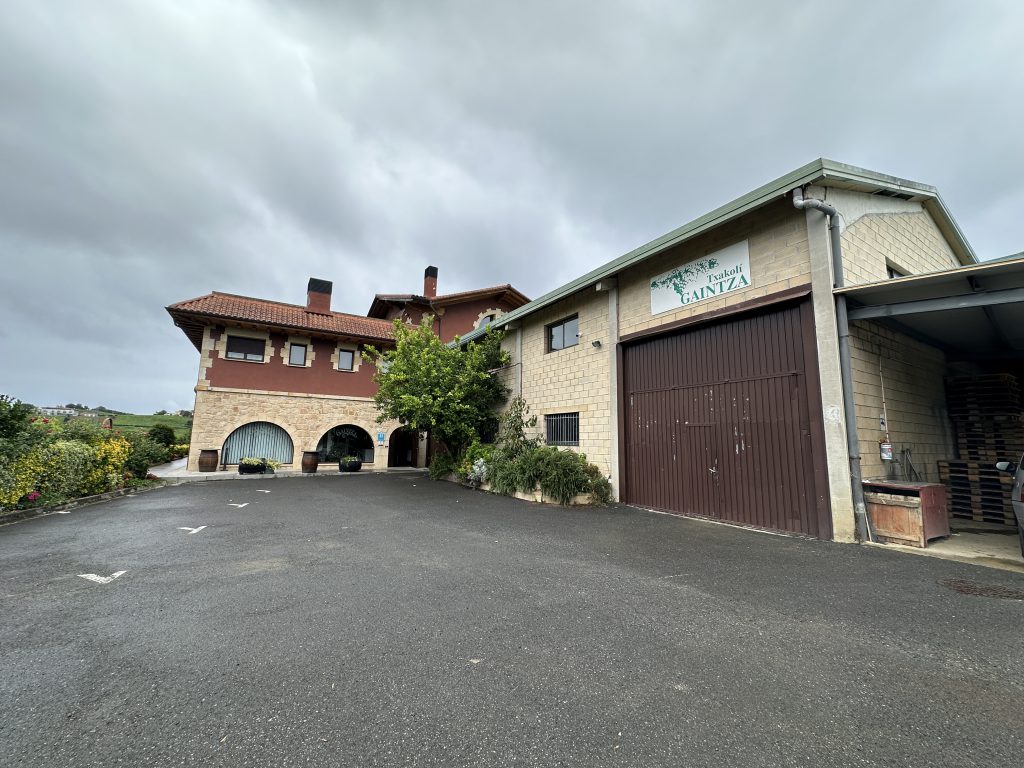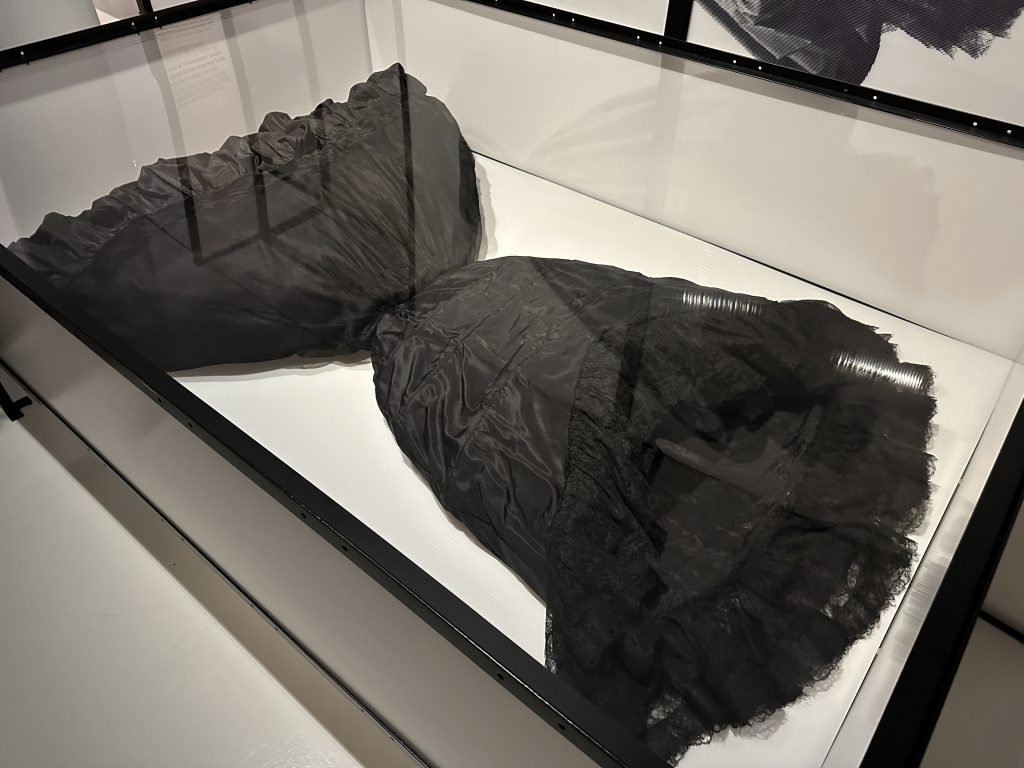Waking up to the light of a sun well above the horizon is a welcome respite after a week of early rises to attend Spanish language classes at 9:30. It’s Saturday, July 15th, and today’s activity is a trip into the town of Getaria. At 11:45 we file onto the bus to take us to the town and Professor Zabalbeascoa shares the details of today’s excursion with us. Our first stop will be a vineyard, Gaintza Txakolindegia, where we will recieve a tour and summary of the land, facilities, and winemaking process. Second will be the town itself where we will have an hour to grab lunch and explore, and third will be el Museo Cristóbal Balenciaga, a museum dedicated to the fashion designer Cristóbal Balenciaga.

Our first view of Getaria comes roughly half an hour into the drive. On one side, the town lies almost level with the sea, its rustic buildings planted no more than 100 feet from where the water laps at the harbor wall. Just beyond beyond the town, jutting out of the water and yet remaining attached to the mainland, is el Ratón (The Mouse), a mountain named for its resemblance to a mouse when viewed from the sea. The other side of the town slopes upwards, leading to rolling hills covered in orderly lines of crops and crested by streaks of trees.

After passing through the town we depart the bus to walk the short gravel path to the vineyard, emerging from within the red-roofed homes to a wider view of the distant hills and, in front of us, the central building of Gaintza Txakolindegia. Upon arrival we are greeted by Joseba, whose family owns and runs the vineyard, and we begin our tour.

As we walk towards a ledge overlooking a portion of the fields, small drops of water beginning to fall from the sky, Joseba explains that the vineyard consists of 14 total plots of grapes, totaling between 47 and 48 acres of land, much of which is harvested and cared for exclusively by hand. The harvest starts when Joseba’s grandfather says it does, which is usually near the end of September and takes about 20 days. The workers rest until December when the vines must be pruned, a process which takes about three months, which prevents the plants from doubling in size before the next harvest, thereby producing more fruit because none of the plants’ energy is used to grow. The grape flowers are pollinated in May, although bees are not used to do so unlike many other vineyards, and when the grapes are eventually harvested they are separated from the stems and crushed to obtain the grape juice. This juice is used in fermentation, which is done in one of 15 huge metal vats usually kept at 14-15 degrees Celsius, although temperature and length of stay varies by tank. After fermentation, the wine is poured into bottles and labeled using environmentally friendly materials, now ready to be bought and shipped.

As Joseba finishes his explanation of their winemaking process we exit the packaging room into what seems to be a break/dining room, which today is being used for our wine tasting. Three types are offered: Gaintza Txakolina, which is by far the vineyard’s biggest production, Aitako Txakolina, which comes from vines 100 years old, and Gaintza Rosé, which isn’t really a wine but is still one of Gaintza Txakolindegia‘s main products. All three drinks have a salty flavor not resulting from any added ingredients but from the vineyard’s proximity to the ocean, whose salty air permeates the grapes and the water they receive. After the tasting we head to the entrance of the building where there is a small room off to the side where wine and other goods can be bought, the first tourist-focused part of this vineyard that I’ve seen.

Afterwards we take the bus into the center of the town where, surrounded by buildings that are old and colorful but not showing their age, we look for lunch. Shops line both sides of the main alleyway we walk, competing for space but without being intrusive as the buildings rise above our heads, neat and decorated balconies lining their sides making the scene look like an idealistic painting of some rural village come to life. I am enveloped by aroma after aroma passing by different restaurants, many notably frying whole fish on open grills or offering seafood themed pinxtos as is typical of Basque cuisine. I walk through a tunnel underneath a bell tower which opens to a view of the harbor, an area almost as big as the center of the town, filled with boats and showing the true culture of Getaria. We try an international award winning gelato place, but unfortunately have insufficient time to grab lunch before rushing to the Balenciaga museum.
While walking up to the museum from the town’s center, we travel up escalators that, surprisingly, only begin to move once people get close enough to them and shut down after people have exited, which brings to light an interesting observation I’ve had from my time so far in Spain: the Basque people are much more energy efficient than the United States is. In the hotel rooms, your key card must be placed into a slot next to the door that turns off all lights and outlets when it is removed. Most buildings have motion-sensor activated lights that shut off after only a few minutes of no movement, which is in stark contrast to UMass Lowell buildings which, from my experience, rarely reach the end of their automated lights’ timers. Air conditioning is a rarity; open windows are used far more often. Cars are much less prominent and bike lanes and public transit receive a far greater emphasis. Even taxis are more efficient, with many of them being electric cars. I don’t know if this is exclusive to the Basque region or even to Spain in general, but this is certainly an improvement over U.S. energy infrastructure and proves that this kind of efficiency is possible.

The Balenciaga museum is interesting enough, although I imagine it would be more appealing to someone with an interest in fashion. Some of the Balenciaga’s displayed works catch my eye, such as one dress so black that its folds and general shape are almost indistinguishable, or another with a shape and material reminiscent of a sleeping bag, but it is the other designer exhibited at the museum, Josep Font, who interests me more. His works emphasize decoration more than the abstract shapes Balenciaga seemed to use, looking far more like a work of art than a work of fashion. Some clothes even look straight out of a dystopian movie, with strong colors, straight lines, and a feeling of strict order common in many dystopian worlds. We rush through the end of the museum, running short on time, and pile back on the bus to head back to the hotel.
I take a short nap on the ride back, feeling tired from the fast pace of the excursion, until we arrive back at 4:30 and I am rested enough to continue with the day. A vineyard tour, the exploration of a town, and a visit to a museum all within a day, and there’s still five more hours until the sun goes down!
